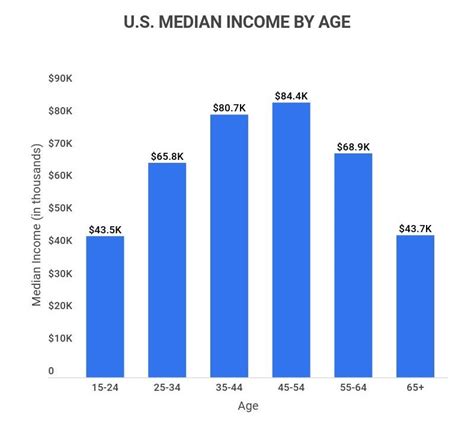Us Salary Statistics: Demographic Insights On Average Income

Are you curious about how much Americans earn on average? Do you want to know how income is distributed across different demographics? In this post, we’ll explore the latest data on US salary statistics and provide demographic insights on average income. From gender and ethnicity to education and occupation, we’ll cover the key factors that influence earnings in America. Let’s dive in!
1. Overall US Salary Statistics
According to the Bureau of Labor Statistics (BLS), the median weekly earnings for full-time workers in the US was $989 in the second quarter of 2021. This translates to an annual salary of approximately $51,428.
However, it’s important to note that there are significant variations in income depending on various factors such as gender, ethnicity, education, and occupation. Let’s explore these factors in more detail.
2. Gender Income Gap
The gender income gap refers to the difference in earnings between men and women. Unfortunately, this gap still exists in the US, with women earning approximately 82 cents for every dollar earned by men.
This gap is even wider for women of color. For example, African American women earn only 63 cents and Latina women earn only 55 cents for every dollar earned by white, non-Hispanic men.
It’s important to address this gap and work towards pay equity for all genders.
3. Ethnicity Income Disparities
There are also significant income disparities across different ethnic groups in the US. According to the BLS, the median weekly earnings for full-time workers in the second quarter of 2021 were:
- $1,020 for Asian workers
- $928 for White workers
- $772 for Black or African American workers
- $739 for Hispanic or Latino workers
These disparities can be attributed to various factors such as discrimination, education, and occupation.
4. Education Level and Income
Education level is also a significant factor in determining income. According to the BLS, the median weekly earnings for full-time workers in the second quarter of 2021 were:
- $746 for workers with less than a high school diploma
- $781 for high school graduates with no college
- $1,305 for workers with a bachelor’s degree or higher
As you can see, higher education levels are associated with higher earnings. However, it’s important to note that there are exceptions to this trend, and some high-paying occupations may not require a college degree.
5. Occupation and Income
Occupation is another key factor in determining income. According to the BLS, the median weekly earnings for full-time workers in the second quarter of 2021 were:
- $615 for food preparation and serving workers
- $1,455 for management occupations
- $1,596 for healthcare practitioners and technical occupations
- $1,760 for legal occupations
As you can see, some occupations pay significantly more than others. It’s important to choose a career path that aligns with your interests and skills, but also provides a reasonable income.
6. Geographic Location and Income
Geographic location is also a factor in determining income. According to the BLS, the median weekly earnings for full-time workers in the second quarter of 2021 were:
- $1,139 in the Northeast
- $1,082 in the West
- $868 in the South
- $853 in the Midwest
As you can see, income levels vary significantly across different regions in the US. This can be attributed to various factors such as cost of living, industry concentration, and economic development.
7. Self-Employment and Income
Self-employment is another factor that can influence income levels. According to the BLS, self-employed workers had a median weekly income of $1,073 in the second quarter of 2021, compared to $989 for wage and salary workers.
However, self-employment also comes with additional responsibilities and risks, such as managing your own taxes and health insurance, and unpredictable income fluctuations.
8. Conclusion
In conclusion, US salary statistics reveal significant variations in income depending on various factors such as gender, ethnicity, education, occupation, geographic location, and self-employment. It’s important to be aware of these factors and advocate for pay equity and equal opportunities for all.
9. FAQs
Q1. What is the median income in the US?
The median weekly earnings for full-time workers in the US was $989 in the second quarter of 2021, which translates to an annual salary of approximately $51,428.
Q2. What is the gender income gap in the US?
The gender income gap in the US refers to the difference in earnings between men and women. Women earn approximately 82 cents for every dollar earned by men.
Q3. What is the average income by ethnicity in the US?
The median weekly earnings for full-time workers in the second quarter of 2021 were:
- $1,020 for Asian workers
- $928 for White workers
- $772 for Black or African American workers
- $739 for Hispanic or Latino workers
Q4. Does education level impact income in the US?
Yes, education level is a significant factor in determining income in the US. Higher education levels are associated with higher earnings.
Q5. What are the highest-paying occupations in the US?
According to the BLS, the highest-paying occupations in the US include management occupations, healthcare practitioners and technical occupations, and legal occupations.
